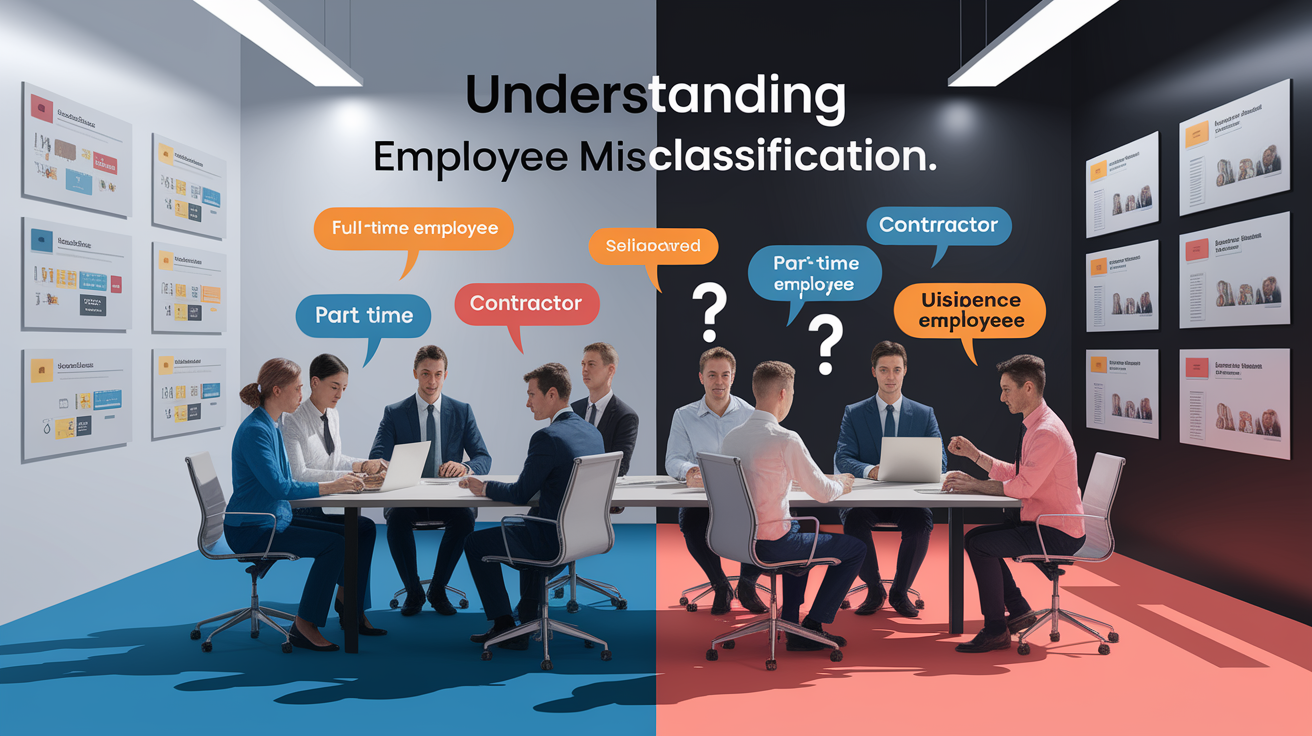Understanding Employee Misclassification
Misclassifying a worker isn’t just a paperwork mistake—it can feel like walking blindfolded through a legal minefield. Each step you take without the right knowledge increases your risk of triggering costly consequences.
At its core, employee misclassification happens when a business labels someone as an independent contractor when the law says they meet the definition of an employee. The distinction between the two hinges heavily on control and independence. According to the IRS, an employee is generally subject to the employer’s instructions on not only the desired outcome but also how the work is performed. An independent contractor usually decides the “how” themselves, with the business focusing only on the results.

This difference is not trivial. It impacts everything from tax treatment and payroll responsibilities to eligibility for benefits like workers’ compensation, unemployment insurance, and protection under the Fair Labor Standards Act (FLSA). An updated IRS guidance reinforces that labeling someone a contractor in a contract does not override the reality of the working relationship.
Why does this matter? Because misclassification can lead to back taxes, penalties, lawsuits, and loss of trust—from both workers and regulators.
Assessing Worker Status: Practical Steps
Figuring out whether someone is a W-2 employee or a 1099 contractor can feel like standing at the bottom of a mountain with no climbing gear. But there is a route upward, and it’s paved with clear questions.
Key Factors to Evaluate
The IRS and courts use various tests—like the economic reality test or the ABC test—but in essence they investigate three core aspects of the relationship:
- Behavioral control – Does the business direct how, when, and where the worker performs the work?
- Financial control – Who controls the business aspects, such as payment method, expense reimbursement, and equipment investment?
- Relationship type – Are there employee-style benefits, permanence, and services central to the business?
The multifactor approach requires weighing all these considerations rather than relying on one factor alone.

Step-by-Step Assessment
- Gather all relevant contracts and agreements.
- Interview managers and supervisors about the degree of control exercised.
- Examine payment records and expense arrangements.
- Evaluate whether the work is integral to your main services or products.
- Consult the latest IRS classification guidelines to compare your findings.
If you’re unsure after this process, consider obtaining professional advice or even requesting an IRS determination using Form SS-8.
Implementing Compliance Processes
Compliance is not a one-time task; it’s an ongoing process—more like tending a garden than flipping a switch. To avoid misclassification, you need structured and repeatable practices.

Best Practices to Maintain Compliance
- Develop a written worker classification compliance checklist for HR and hiring managers.
- Train supervisors to understand the difference between employees and independent contractors.
- Periodically audit worker classifications, especially when roles evolve.
- Document your decision-making process for each classification.
- Use updated, jurisdiction-sensitive independent contractor agreements when appropriate.
Remember, the tax implications are significant—missteps can mean unpaid employment taxes, interest, and IRS penalties.
Correcting Misclassification: Remediation Strategies
Discovered you’ve been classifying workers incorrectly? It’s not the end—it’s an opportunity to get back on solid ground. The sooner you act, the better you can limit exposure to legal and financial damage.
Immediate Actions to Take
- Stop the misclassification. Reclassify the worker correctly going forward.
- Calculate financial liabilities. Determine back pay, benefits, and taxes owed.
- Communicate openly. Inform affected workers and explain the changes.
- Engage authorities if necessary. Programs like the IRS Voluntary Classification Settlement Program (VCSP) can help reduce penalties.
- Document remediation steps. Keep records to show good faith efforts in case of future audits.
According to industry insights, swift corrective action can lessen regulatory scrutiny and support compliance reputation.
Benefits of Proper Classification
Why invest the effort? Because proper classification isn’t just about avoiding penalties—it’s about building a stable, trusted business environment.
- Compliance confidence – Reduced audit risk and better defense in case of investigations.
- Financial predictability – Accurate payroll tax handling and prevention of surprise liabilities.
- Workforce stability – Clear expectations for both employees and contractors.
- Reputation protection – Demonstrates fair treatment and integrity in workforce management.
- Employee satisfaction – Properly classified employees receive their entitled benefits and legal protections.
Done right, worker classification serves as both shield and compass—a shield against legal troubles, and a compass that guides your business toward fair, sustainable growth.















